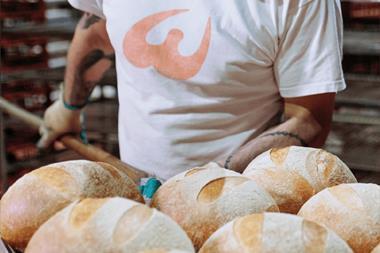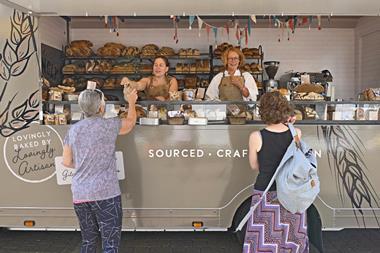
Gail’s is in the press again due to its use of day-old pastries to make almond croissants, but the issue highlights the challenges bakers are facing in educating shoppers and demonstrating value, says British Baker editor Amy North.
Gail’s has been having a tough couple of weeks – first residents of Walthamstow started a petition to keep the ‘large-scale bakery chain’ from opening in the area and now it’s being criticised for charging more for almond croissants made from day-old pastries.
The media circus around the latter started after a user on X, formerly Twitter, posted a comment stating: “Unsure whether to be impressed or horrified that someone has come up with a concept to capitalise yellow sticker goods to make more profit,” after finding out that its almond croissants cost more than a plain one. The Gail’s website currently lists an almond croissant at £3.80 and a plain one at £2.65, with a Chocolate & Almond Croissant listed at £3.90 vs the Pain au Chocolat at £2.95.
The assumption by some is that the bakery sprinkles a few almonds on top and whacks up the price, which is not the case. The Gail’s social media team describe it as a “quite laborious bake”, noting the traditional recipe’s use of day-old croissants also adds many other ingredients that contribute to the increased price of the baked good.
The traditional recipe of almond croissants calls for day-old pastries and we also add many other ingredients. It's a quite laborious bake! Please get in touch with our team via https://t.co/S7gDFcVBoI if you would like to discuss the process further.
— GAIL's Bakery (@GAILsBakery) August 19, 2024
Those in the bakery world have no doubt been smirking at the uproar, with many utilising a similar process for making their own almond croissants. Bread Ahead founder Matthew Jones took to Instagram amid the controversy to promote the London-based bakery’s offering made from leftover croissants, which are soaked in syrup before being filled with frangipane and baked. Another baker chimed in on his post boasting that their almond croissants are made with two-day old croissants.
Admittedly, if Gail’s wasn’t already in the headlines thanks to the backlash of its proposed Walthamstow store this may have been swept under the rug. But what this whole debacle does highlight, though, is the disconnect between standard bakery practices and consumers’ understanding of them. It also calls attention to just how important freshness is to shoppers – freshness and taste were found by Délifrance as key drivers of growth – and raises the question of how bakeries can balance this with a waste reduction agenda (Gail’s almond croissants are part of its Waste Not range).
When I asked my LinkedIn connections what their thoughts were on the situation, I was thankfully greeted by several level headed responses. One baker expressed that “so many people have very little understanding of bakery economics, ingredients and labour costs” while another was frustrated at the misconception of shoppers stating “’it’s just a croissant… why is it so expensive?’” Another highlighted that if a bakery was seen throwing out bags of croissants and bread instead of utilising them in some way the headline would be about “how wasteful and unresourceful” they are.
Thankfully, not all shoppers are so oblivious to the time and effort that goes into producing their daily bread, or in this case twice-baked almond croissants, but it seems bakeries still have their work cut out to help some customers fully appreciate the value of their wares.
































1 Readers' comment